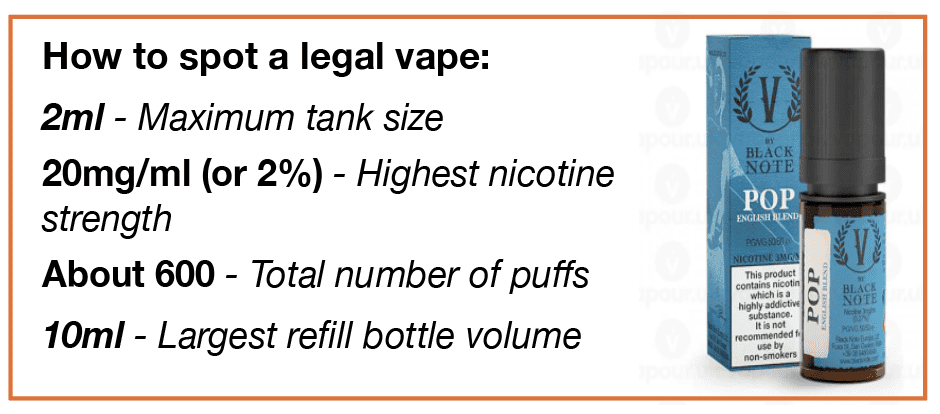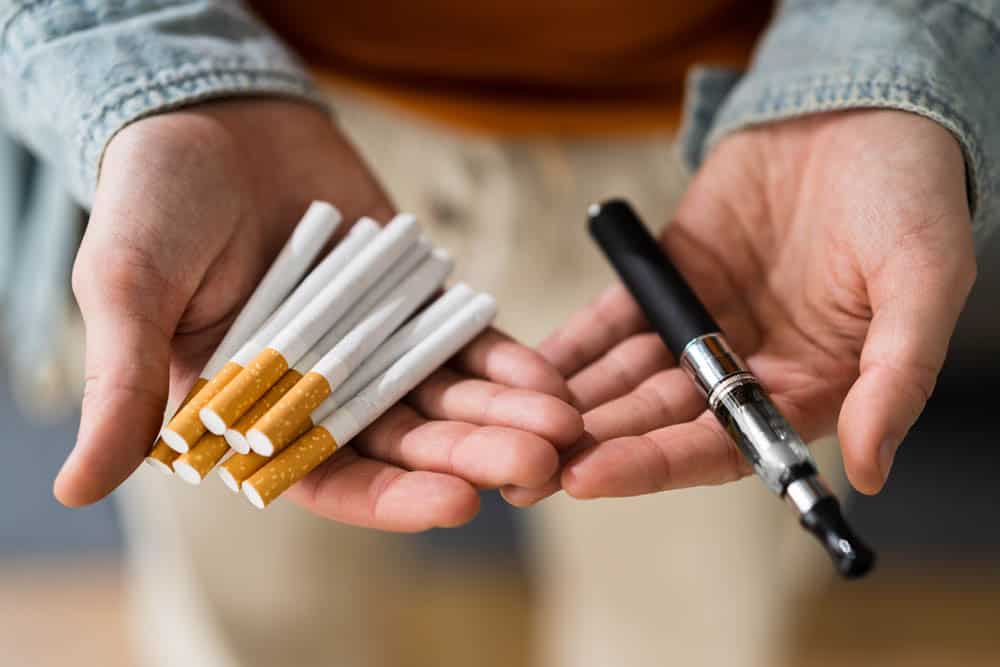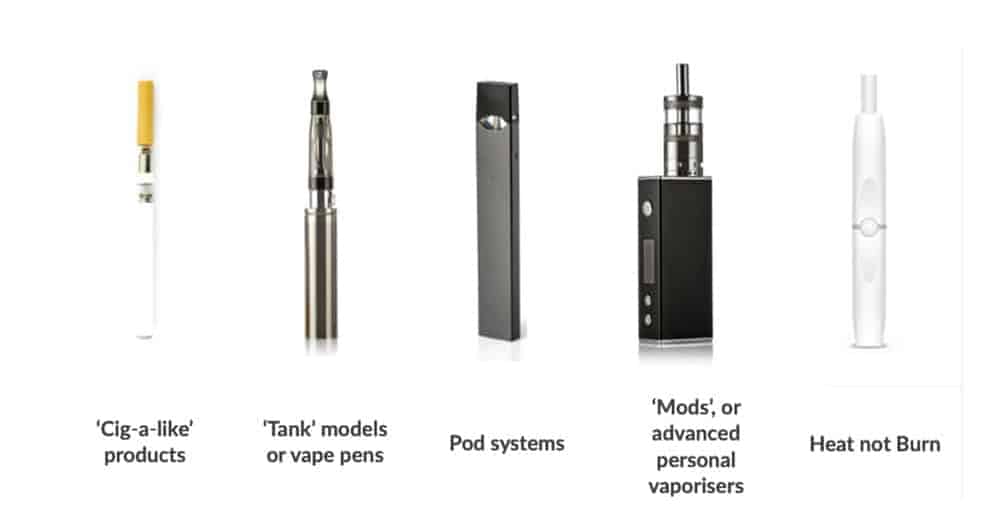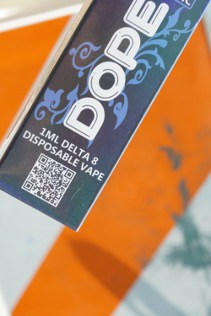Life-Stuff.org
Facts & advice foryoung adults

Electronic cigarettes, e-cigarettes and vapes are battery-powered devices which allow someone to inhale a flavoured vapour – most contain high levels of nicotine as they were developed to help people give up smoking.
There are lots of different opinions and beliefs about vaping/ e-cigarette use. Some say it’s as harmful or worse than smoking, others say it helps with quitting smoking. The truth is, it’s too early to know the long term effects of vaping yet as they vary so much in level of nicotine (from the equivalent of 20 to 100 plus cigarettes in some brands) and other ingredients such as lead, nickel, chromium and other chemicals in illicit ones. It is not advised for non-smokers to vape as nicotine is addictive, but switching to nicotine vapes can help smokers quit.
Most young people don’t use vapes
Recent surveys in 2023 (ASH/ONS) show that about 1 – 2 in 10 18- to 24-year-olds vape. So most young adults choose not to.

Vaping and the Law
Vape manufacturers have to follow regulations on ingredients, packaging and marketing and be registered with the Medicine and Health Care Products Regulatory Agency (MHRA). But the agency is not required to check the claims made and has no power to investigate unregistered products. 25% of vapes on sale (according to trading standards) are unregulated, meaning the ingredients are unknown, so anyone vaping should be careful about the product chosen. There is now an ‘illicit vapes enforcement squad’ to help remove illegal products from being sold.
The law and under 18s
The legal vaping age in the UK is 18, with or without nicotine.
To purchase e-cigarettes and vaping liquids, you must be 18
It’s against the law to sell vapes to anyone under 18.
It’s also illegal for adults to buy vapes for anyone under 18 (proxy purchasing).

Vaping is different to smoking, which burns tobacco leaf creating smoke.
Vaping, like smoking can deliver nicotine. It is the burning of tobacco by smoking that causes most of the health harms which is why smokers are advised to switch to vaping or nicotine gum or patches.
Vaping is less harmful than cigarettes because you don’t inhale the toxic tar and carbon monoxide found in tobacco smoke.
The vaping liquid (also called e-liquid) normally contains propylene glycol (which creates a throat sensation similar to smoking), vegetable glycerine (which gives vapour), flavours and the option of nicotine. Illicit vapes have been found to contain lead, nickel, chromium, nicotine levels of 100 plus cigarettes per device, acetaldehyde and formaldehyde.


Vapes come in different shapes and sizes including:
There are also more sophisticated customisable devices with variable power, but these are used more by people who have been vaping for a long time.
The latest alternative nicotine delivery systems are called “Heat-not-Burn” or ‘heated tobacco’ products. They use electronic delivery devices but contain tobacco leaf and heat a small plug of tobacco without setting it alight, producing an inhalable vapour. Because the device heats rather than burns tobacco, they produce fewer toxins than normal cigarettes. However, little is known about the health effects yet, so there could be long term health concerns.
Nicotine is addictive because it affects part of the brain that is involved in ‘rewarding behaviour’. Some vapes DON’T contain nicotine, but products can have different amounts. When they quit smoking, many people miss nicotine and can experience a range of withdrawal symptoms, make quitting difficult. Vaping can provide nicotine without the toxins found in cigarette smoke, but it is only advised that people vape as an aid to quit smoking.
Breathing any product into the lungs unnecessarily is not ideal. Vapes are not harmless and may cause side effects depending on how much someone vapes, whether it contains nicotine and at what dose, or what other contents are in the vape (such as CBD or THC) and what style e-liquid is chosen.
The most common side effects of vaping include:
A non-smoker who uses e-cigarettes containing nicotine, may also get withdrawal symptoms if they try to quit using them, as over time their body and brain would get used to having nicotine.
There may be risks associated with vaping long-term, but these are not yet known.
Regarding safety, categorical statements about the toxicity of electronic cigarettes are not possible because of the large number of devices and fluids available and the frequent addition of new products to the market.
Nicotine is not recommended for non-smokers, children and pregnant women because it is harmful to children and unborn babies. Nicotine can also make people feel irritable, restless, unable to concentrate and excessive consumption can also have side effects, like nausea and vomiting.

Some vaping products are marketed as containing cannabidiol (CBD) or illicit tetrahydrocannabinol (THC), especially those marketed on social media platforms. Testing of these products has shown many are made with synthetic cannabis (Spice) or substances such as fentanyl, both of which are highly dangerous. Vaping illicit substances, such as ‘spice’ or THC, or black-market e-liquids, carry unknown risks. THC containing e-cigarette products are linked to most hospitalisations for vaping. They allow a large amount of THC to be inhaled very quickly, potentially leading to overdose. THC e-cigarettes played a major role in the outbreak of e-cigarette, or vaping product use-associated lung injury (EVALI) in the US in 2019.

ASH say that 1.3 million disposable vapes are thrown away each week – enough to fill 22 football pitches. This pollutes nature with chemicals and plastic.